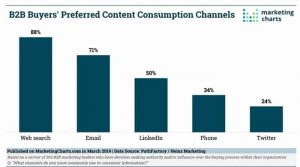Uniting multiple digital identifiers would boost the amount of conversions by connecting more cross-device events to a person ID.

Marketers have always known their total sales, but they’ve also always struggled to know what led to the sales. Which sales can be attributed to ads? To know that, you need to know who saw ads and who converted, and if it’s the same person.
In digital marketing, who saw what and who converted have been historically tracked using cookies. These cookies are temporary identifiers dropped onto user browsers until they delete them periodically (typically once a month). Brands would drop cookies on people who saw the ad and track that cookie until it got to a webpage with a conversion pixel that marks a successful conversion event. This method worked very accurately for a long time when people primarily access digital media through their desktop.
Today, people, of course, use multiple devices, such as smartphones, tablets and connected TVs. These devices now provide a device-specific ID for advertisers. As a result, the IDs that are shown ads may not be the IDs that end up converting, even if the IDs ultimately belong to the same person. Cross-device journeys are increasingly common, especially for longer purchase consideration items where a user has more time to be exposed to ads before buying. Consequently, the accuracy of the traditional way of conversion tracking is quickly decreasing.
By uniting multiple digital identifiers to a single person using shared attributes, such as a common email login across multiple devices, a marketer could resolve cookie and device identifiers to a person ID. As a result, the marketer would understand if the same person ID that was exposed to ads was found to have converted.
This people-based measurement approach would boost the number of conversions that can be attributed to advertising by connecting more cross-device events. As a byproduct of this improved tracking, the amount of publishers and channels that should receive credit would also go up.
Thunder Experience Cloud conducted a study [registration required] using billions of impressions it ad served to measure the impact of people-based measurement. It found that traditional cookie-based or device-based methods undercount conversions by 18 percent! Digital advertisers are missing out on credit for nearly one out of every five sales that actually happen.
Even if this change in measurement doesn’t automatically change past sales numbers, it helps brands improve future sales numbers. By better understanding where their sales are coming from and what led to them, brands can reallocate resources appropriately to invest more in the ads that work and drive more sales.
It’s no wonder that brands and publishers are increasingly turning to people-based approaches to ad serving, targeting and tracking. No one likes it when they don’t get well-deserved credit for what they did. The only way to be fair to people is to treat people like people.
Opinions expressed in this article are those of the guest author and not necessarily Marketing Land. Staff authors are listed here.
Marketing Land – Internet Marketing News, Strategies & Tips
(34)
Report Post







